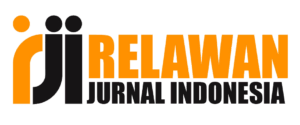Spatial Implementation of the Harvesine Algorithm in The Mapbox API for Tourism Mapping
DOI:
https://doi.org/10.30812/bite.v5i1.2874Keywords:
Geolocation, Harvestine Algorithm, Lombok, Mapbox API, TourismAbstract
Background: Lombok is one of the tourist destinations in West Nusa Tenggara (NTB) Province, which has various kinds of tourist destinations. Before the Covid 19 pandemic, the number of tourist visits to NTB, especially the island of Lombok, increased every year.
Objective: This study aimed to implement the haversine algorithm in finding and determining the closest route to tourist destinations on Lombok Island to make it easier for tourists to choose their intended location to make the tourism sector grow again after the impact of covid 19.
Methods: Geolocation concept with harvesine algorithm formula.
Result: The research results are the output of the Mapbox api implementation application in the form of a geographical map of the island of Lombok by displaying spatial data of tourism locations, as well as the paths traversed to reach the intended tourist sites accompanied by the distance and time needed to reach them. The level of user satisfaction with the applications built is 87,62%.
Conclusion: This research results in user satisfaction in finding information, location, and paths that can be reached to tourist sites.
References
[2] M. T. Rachman and B. R. Tri Yunarni, “Peran Dinas Pariwisata Dalam Tata Kelola Dan Promosi Kawasan Pariwisata (Studi Kasus di Kecamatan Pemenang Kabupaten Lombok Utara),” JIAP (Jurnal Ilmu Adm. Publik), vol. 7, no. 1, p. 80, 2019, doi: 10.31764/jiap.v7i1.778.
[3] Fathurrahim, “Pariwisata NTB dalam Lingkaran COVID-19,” Sekol. Tinggi Pariwisata Mataram, vol. 15, no. 2, pp. 4057–4062, 2020, [Online]. Available: http://ejurnal.binawakya.or.id/index.php/MBI
[4] D. P. P. NTB, “Laporan Tahunan Dinas Pariwisata NTB tahun 2021,” in Laporan Tahunan Dinas Pariwisata NTB tahun 2021, Indonesia, 2021, p. 66.
[5] G. Arianti, “Exposure Berita Terhadap Minat Pariwisata Lombok Pasca Gempa,” WACANA, J. Ilm. Ilmu Komun., vol. 18, no. 1, 2019, doi: 10.32509/wacana.v18i1.723.
[6] H. Wulandari, S. Chotijah, and W. Suadnya, “Strategi Komunikasi Pemasaran Kawasan Ekonomi Khusus (KEK) Mandalika sebagai Destinasi Pariwisata Prioritas Pasca Gempa Lombok 2018 Communication Marketing Strategy of Mandalika Special Economic Zone As The Priority Tourism Destination Post 2018 Earthquak,” J. Media Commun. Sci. , vol. 2, no. 3, pp. 158–167, 2019.
[7] G. A. Manu and Y. A. Benufinit, “Pengembangan Sistem Absensi Online Berbasis Web Menggunakan Maps Javasripts Api,” J. Pendidik. Teknol. Inf., vol. 3, no. 2, pp. 9–16, 2020, doi: 10.37792/jukanti.v3i2.216.
[8] A. Adil and B. K. Triwijoyo, “Sistem Informasi Geografis Pemetaan Jaringan Irigasi dan Embung di Lombok Tengah,” MATRIK J. Manajemen, Tek. Inform. dan Rekayasa Komput., vol. 20, no. 2, pp. 273–282, 2021, doi: 10.30812/matrik.v20i2.1112.
[9] A. Adil, R. A. Dwiputri, and B. K. Triwijoyo, “Aplikasi Spasial Rekomendasi Wisata Terdekat dengan Metode Haversine Berbasis Mobile,” J. Bumigora Inf. Technol., vol. 4, no. 1, pp. 95–106, 2022, doi: 10.30812/bite.v4i1.1948.
[10] Mardiah, R. Adha, and Kurniawan, “Strategi Promosi Pariwisata Di Dinas Pariwisata Provinsi Nusa Tenggara Barat (Studi Kasus Promosi Pariwisata Pasca Gempa Bumi di Pulau Lombok Tahun 2018),” JIAP (Jurnal Ilmu Adm. Publik), vol. 7, no. 1, pp. 25–33, 2019, doi: 10.31764/jiap.v7i1.773.
[11] S. H. Putra and E. Afri, “Penerapan Sistem Informasi Geografis Berbasis Web Untuk Pengembangan Pariwisata pada Kabupaten Langkat,” InfoTekJar J. Nas. Inform. dan Teknol. Jar., vol. 5, no. 1, pp. 170–174, 2020, doi: https://doi.org/10.30743/infotekjar.v5i1.2891.
[12] A. Adil, I. M. Y. Dharma, H. Santoso, and L. S. Prayatna, “Penerapan Algoritma K-Means Berbasis Spasial Untuk Pengelompokan Potensi Virus Covid-19 Di Kabupaten Dompu,” SATIN – Sains dan Teknol. Inf., vol. 9, no. 1, pp. 64–73, 2023, doi: 10.33372/stn.v9i1.954.
[13] Y. Rahmanto, S. Hotijah, and . Damayanti, “Perancangan Sistem Informasi Geografis Kebudayaan Lampung Berbasis Mobile,” J. Data Min. dan Sist. Inf., vol. 1, no. 1, p. 19, 2020, doi: 10.33365/jdmsi.v1i1.805.
[14] Chandra Husada, Kristoko Dwi Hartomo, and Hanna Prillysca Chernovita, “Implementasi Haversine Formula untuk Pembuatan SIG Jarak Terdekat ke RS Rujukan COVID-19,” J. RESTI (Rekayasa Sist. dan Teknol. Informasi), vol. 4, no. 5, pp. 874–883, 2020, doi: 10.29207/resti.v4i5.2255.
[15] I. Husni Al Amin, “Implementasi Metode Haversine untuk Pencarian Optical Distribution Point,” Din. Inform., vol. 13, no. 1, 2021.
[16] S. Aziz and A. Hermanto, “Penggunaan algoritma haversine dan geo-tagging untuk optimasi jarak dan waktu tempuh pada aplikasi monitoring pengiriman barang,” Pros. Senakama, vol. 1, no. 1, pp. 747–756, 2022.
[17] D. D. Prihantoro and M. I. Wahyuddin, “Implementasi Algoritma Haversine Formula dan Location Based Service Pada Aplikasi Pencarian Lokasi Bird Contest Berbasis Android,” J. Media Inform. Budidarma, vol. 6, no. 1, p. 663, 2022, doi: 10.30865/mib.v6i1.3546.
[18] K. Yasin and A. Adil, “Implementasi Google Maps API Pemetaan Jalur Evakuasi Bencana Alam di Kabupatem Lombok Utara,” MATRIK J. Manajemen, Tek. Inform. dan Rekayasa Komput., vol. 19, no. 1, pp. 138–146, 2019, doi: 10.30812/matrik.v19i1.519.
[19] A. Prasetio, “Perancangan Aplikasi Simulasi Metode Haversine Dalam Pencarian Lokasi Pkl Terdekat Untuk Siswa/I Smks Mustafa Perbaungan,” J. Sist. Inf. Kaputama, vol. 5, no. 2, pp. 99–105, 2021, [Online]. Available: https://maps.google.com.
[20] M. R. Yudin, “Implementasi Haversine Formula Pada Pencarian Lokasi Rumah Sakit Rujukan Covid-19 Di Jabodetabek Berbasis Web Pencarian Lokasi Rumah Sakit Rujukan Covid-19 Di Jabodetabek Berbasis Web,” 2021.
[21] T. Pricillia and Zulfachmi, “Perbandingan Metode Pengembangan Perangkat Lunak (Waterfall, Prototype, RAD),” J. Bangkit Indones., vol. 10, no. 1, pp. 6–12, 2021, doi: 10.52771/bangkitindonesia.v10i1.153.
[22] A. A. Wahid, “Analisis Metode Waterfall Untuk Pengembangan Sistem Informasi,” J. Ilmu-ilmu Inform. dan Manaj. STMIK, no. November, pp. 1–5, 2020.
[23] H. Nur, “Penggunaan Metode Waterfall Dalam Rancang Bangun Sistem Informasi Penjualan,” Gener. J., vol. 3, no. 1, p. 1, 2019, doi: 10.29407/gj.v3i1.12642.
[24] J. Sulistio, “Implementasi metode haversine formula dalam aplikasi untuk menentukan lokasi emergency service terdekat di daerah istimewa yogyakarta,” Univ. Teknol. Yogyakarta, pp. 1–14, 2019.














